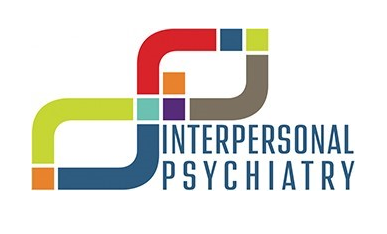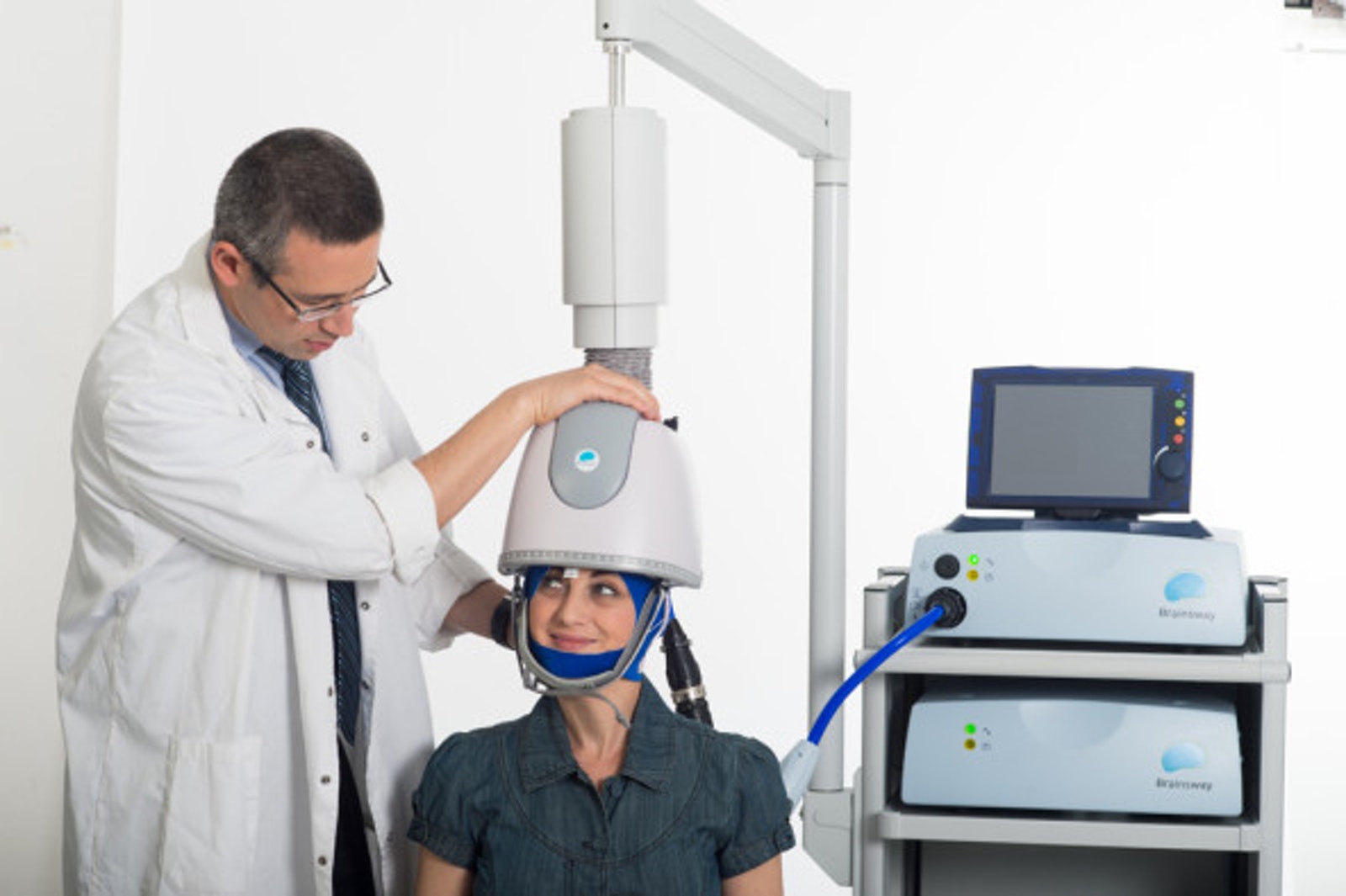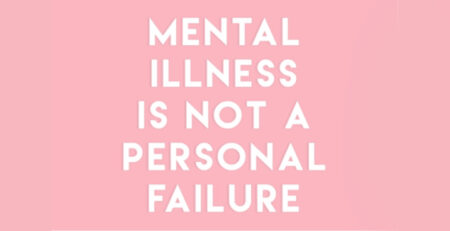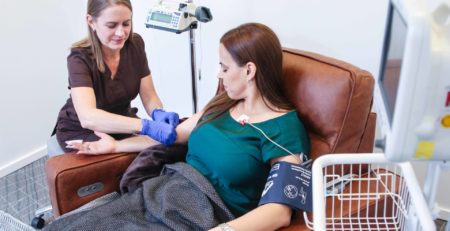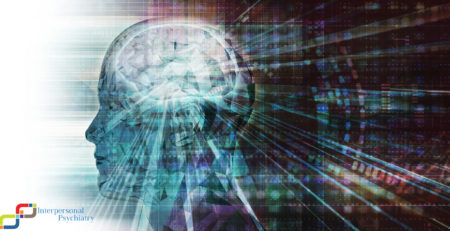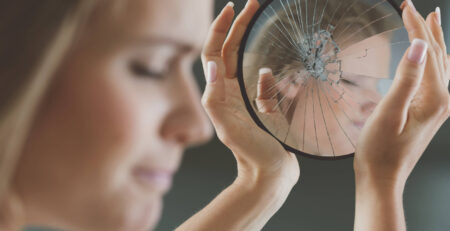Kansas City’s Best Deep TMS Therapy
Transcranial magnetic stimulation (TMS) is a noninvasive procedure that uses magnetic fields to stimulate nerve cells in the brain to improve symptoms of depression. TMS is typically used when other depression treatments haven’t been effective.
This treatment for depression involves delivering repetitive magnetic pulses, so it’s called repetitive TMS or rTMS. During an rTMS session, an electromagnetic coil is placed against your scalp near your forehead. The electromagnet used in TMS creates electric currents that stimulate nerve cells in the region of your brain involved in mood control and depression.
You usually receive TMS treatments five times a week for four to six weeks. Each session lasts about 30 to 60 minutes, and you’re awake and alert during the procedure. There’s no pain associated with TMS, and side effects are generally mild and temporary.
Some people experience a mild headache or tingling during treatment, but these side effects usually go away on their own. There’s also a small risk of seizure with TMS, but this is rare. The benefits of TMS may last long after treatment ends. In some cases, people may only need booster sessions once every few months or years to maintain the benefits of treatment.
How does Deep TMS work?
rTMS is a noninvasive procedure that uses magnetic fields to stimulate nerve cells in the brain to improve symptoms of depression. A trained professional positions a magnetic coil against your scalp near your forehead. The wave painlessly delivers magnetic pulses that stimulate nerve cells in the region of your brain involved in mood control and depression. It’s thought that rTMS activates areas of the brain that have decreased activity in depression.
The biology of why rTMS works isn’t completely understood, but the stimulation appears to impact how the brain works, which eases depression symptoms and improves mood. Different ways to perform rTMS exist, and techniques may change as experts learn more about the most effective ways to use this treatment. If you’re considering rTMS for depression, talk with a mental health professional to see if it’s right for you.
Why Deep TMS?
Depression is a severe medical condition that can profoundly affect every aspect of a person’s life. Although depression is highly treatable, standard treatments such as medications and talk therapy don’t work for everyone. For these people, repetitive TMS may be an effective treatment option. Redundant TMS is a noninvasive procedure that uses magnetic fields to stimulate nerve cells in the brain. This stimulation can change how the brain functions and alleviate the symptoms of depression. Repetitive TMS is typically done on an outpatient basis and most people who undergo the treatment experience no side effects. If you or someone you know is struggling with depression, talk to your doctor about whether repetitive TMS might be right for you.
Risks
Repetitive transcranial magnetic stimulation (rTMS) is a noninvasive brain stimulation technique used to treat depression. Unlike vagus nerve stimulation or deep brain stimulation, rTMS does not require surgery or implantation of electrodes. And, unlike electroconvulsive therapy (ECT), rTMS doesn’t cause seizures or require sedation with anesthesia.
Generally, rTMS is considered safe and well-tolerated. However, it can cause side effects, such as headache, dizziness, scalp discomfort, and tingling or numbness in the face. These side effects are usually mild and go away on their own. Serious side effects are rare, including seizures, mania, and stroke. If you experience any severe side effects during treatment, be sure to tell your doctor right away.
Common side effects
Common side effects of transcranial magnetic stimulation (TMS) are generally mild to moderate and improve shortly after an individual session. They may include headaches, scalp discomfort at the stimulation site, tingling or twitching facial muscles, and lightheadedness. Your doctor can adjust the level of stimulation to reduce symptoms or may recommend that you take over-the-counter pain medication before the procedure. Generally, side effects decrease over time with additional sessions. If you experience any severe or persistent side effects, be sure to contact your doctor.
Uncommon side effects
Some people experience side effects after undergoing repetitive transcranial magnetic stimulation (rTMS). These side effects are usually mild and go away on their own, but they may sometimes be more severe. The most common side effects are headache, dizziness, and lightheadedness. Less common side effects include nausea, tingling or numbness in the hands or feet, and temporary vision changes. In rare cases, rTMS may cause a seizure. Some people with bipolar disorder may experience mania after treatment. It is also possible to experience hearing loss if ear protection is not used during treatment. More research is needed to determine whether rTMS may have any long-term side effects. If you experience any side effects after rTMS, please consult your doctor.
How you prepare
Before having rTMS, you may need a:
- Physical exam and possibly lab tests or other tests
- Psychiatric evaluation to discuss your depression
These evaluations help make sure that rTMS is safe and a good option for you.
Tell your doctor or mental health provider if:
- You’re pregnant or thinking of becoming pregnant.
- You have any metal or implanted medical devices in your body. In some cases, people with metal implants or devices can have rTMS. However, due to the strong magnetic field produced during rTMS, the procedure is not recommended for some people who have the following devices:
- Aneurysm clips or coils
- Stents
- Implanted stimulators
- Implanted vagus nerve or deep brain stimulators
- Implanted electrical devices, such as pacemakers or medication pumps
- Electrodes for monitoring brain activity
- Cochlear implants for hearing
- Any magnetic implants
- Bullet fragments
- Any other metal device or object implanted in your body
- You’re taking any medications, including prescription or over-the-counter medications, herbal supplements, vitamins or other supplements, and the dosages.
- You have a history of seizures or a family history of epilepsy.
- You have other mental health disorders, such as substance misuse, bipolar disorder, or psychosis.
- You have brain damage from illness or injury, such as a brain tumor, a stroke, or a traumatic brain injury.
- You have frequent or severe headaches.
- Do you have any other medical conditions?
- You’ve had prior treatment with rTMS, and whether it helped treat your depression.
Before your first appointment
If you’re considering repetitive transcranial magnetic stimulation (rTMS) for depression, talk to your doctor about what to expect before, during, and after the procedure.
rTMS is a noninvasive procedure that uses magnetic fields to stimulate nerve cells in the brain to improve mood. It’s usually performed on an outpatient basis, which means you don’t need to stay overnight in a hospital. But you may want someone to drive you home after the first treatment, as you may feel a bit dizzy or confused afterward.
Before rTMS, your doctor will likely perform a physical exam and psychiatric evaluation. You may also have blood tests and imaging tests of your brain. During the procedure, you’ll sit in a chair while an electromagnetic coil is placed against your head. You may hear clicking or buzzing during the treatment, but you won’t feel any pain. Each session lasts about 40 minutes, and you’ll have five weekly sessions for four to six weeks.
Most people who undergo rTMS experience mild side effects such as headache, scalp discomfort at the stimulation site, or lightheadedness. These side effects are usually temporary and go away on their own.
If you’re considering rTMS for depression, talk to your doctor about what to expect before, during, and after the procedure.
During each treatment
Once the coil placement and dose are identified, you’re ready to begin. Here’s what to expect during each treatment:
- You’ll sit in a comfortable chair with ear plugs and the magnetic coil against your head.
- When the machine is turned on, you’ll hear clicking sounds and feel tapping on your forehead.
- The procedure will last about 40 minutes, and you’ll remain awake and alert. You may feel scalp discomfort during the treatment and for a short time afterward.
After each treatment
You can return to your normal daily activities after your treatment. Typically, between treatments, you can expect to work and drive.
Results
If rTMS works for you, your depression symptoms may improve or go away completely. Symptom relief may take a few weeks of treatment.
The effectiveness of rTMS may improve as researchers learn more about techniques, the number of stimulations required, and the best sites on the brain to stimulate.
Ongoing treatment
While the benefits of rTMS for those suffering from depression have been well-documented, it is still unclear if maintenance sessions are necessary for long-term remission or if the treatment only provides temporary relief. However, if your depression does improve with initial rTMS treatment and you subsequently experience another episode of symptoms, your insurance may cover a re-induction of therapy. It is essential to discuss all options for ongoing treatment with your doctor to make the best decision for your individual needs.
